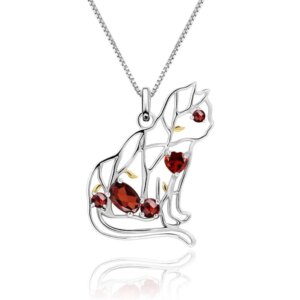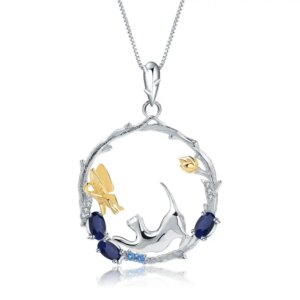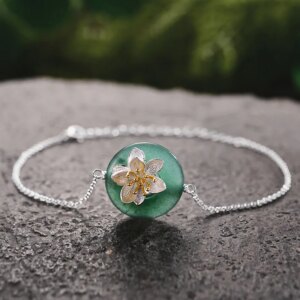Cats ringworm is a common fungal infection that can cause discomfort and health issues for your feline friend. This article will guide you through the symptoms, treatment options, and preventive measures to help you manage and treat ringworm effectively. By understanding the condition, you can ensure your cat remains healthy and happy. Read on to learn more about the key aspects of cats ringworm and how to address it.
Common Symptoms of Cats Ringworm
Recognizing the symptoms of cats ringworm is crucial for early detection and treatment. Here are some of the most common signs to look out for:
Circular Patches of Hair Loss
One of the most recognizable symptoms of cats ringworm is the appearance of circular patches of hair loss. These patches are usually round or oval and may have a red, irritated border. The skin within these patches can appear scaly or crusty. Early identification of these patches can help you seek timely treatment and prevent the condition from worsening.
Scaly Skin and Redness
In addition to hair loss, cats with ringworm often exhibit scaly, red, and irritated skin. The affected areas may feel dry and rough to the touch. These symptoms can be particularly noticeable on the face, ears, paws, and other parts of the body where the skin is more exposed.
Itching and Irritation
Cats with ringworm may experience intense itching and irritation, leading to constant scratching and grooming. This can further exacerbate the condition and cause secondary infections. If you notice your cat exhibiting unusual scratching or grooming behavior, it may be a sign of ringworm.
Treatment Options for Cats Ringworm
Once you have identified the symptoms of cats ringworm, the next step is to seek appropriate treatment. Here are some of the most effective treatment options available:
Antifungal Medications
Antifungal medications are a primary treatment for cats ringworm. These medications can be administered orally or topically and are designed to kill the fungus causing the infection. Common antifungal drugs include itraconazole, terbinafine, and griseofulvin. It is important to follow the prescribed dosage and treatment duration to ensure complete eradication of the fungus.
Topical Treatments
Topical treatments, such as antifungal shampoos, creams, and sprays, can be highly effective in managing cats ringworm. These treatments are applied directly to the affected areas and help to reduce itching, inflammation, and the spread of the infection. Some popular topical treatments include lime sulfur dips and antifungal shampoos containing miconazole or chlorhexidine.
Home Remedies and Natural Solutions
While antifungal medications and topical treatments are highly effective, some pet owners prefer to use home remedies and natural solutions to manage cats ringworm. These methods can be used in conjunction with conventional treatments to enhance their effectiveness. Some natural remedies include tea tree oil, apple cider vinegar, and aloe vera gel. However, it is important to consult with a veterinarian before using any home remedies to ensure they are safe and appropriate for your cat.
Preventing the Spread of Cats Ringworm
Cats ringworm is highly contagious and can easily spread to other pets and humans. Here are some preventive measures to help you manage the condition and protect your household:
Maintaining a Clean Environment
Regular cleaning and disinfection of your home can significantly reduce the risk of ringworm transmission. Use a pet-safe disinfectant to clean surfaces, floors, and other areas where your cat spends time. Vacuum carpets and upholstery frequently to remove fungal spores. Washing your cat’s bedding and toys in hot water can also help to eliminate the fungus.
Regular Grooming and Hygiene
Regular grooming is essential for managing cats ringworm. Brush your cat’s fur to remove loose hair and debris, and trim their nails to prevent the spread of spores. Bathing your cat with an antifungal shampoo can also help to reduce the fungal load on their skin. Additionally, keeping your cat’s living areas clean and dry can help to prevent the growth of fungi.
Avoiding Direct Contact with Infected Cats
Avoiding direct contact with infected cats is crucial to prevent the spread of ringworm. If you have multiple pets, isolate the infected cat to a separate room to prevent the fungus from spreading to other animals. Wear gloves and wash your hands thoroughly after handling the infected cat or any items in their environment. This can help to reduce the risk of transmission to humans and other pets.
Diagnosing Cats Ringworm
Accurate diagnosis is essential for effective treatment of cats ringworm. Here are some methods used to diagnose the condition:
Skin Scrapings and Fungal Cultures
Skin scrapings and fungal cultures are the most reliable methods for diagnosing cats ringworm. A veterinarian will gently scrape the affected areas of your cat’s skin and examine the samples under a microscope. Fungal cultures involve growing the fungus in a laboratory to confirm the presence of ringworm. These tests can help to identify the specific type of fungus causing the infection and guide the treatment plan.
Visual Inspection and Symptom Recognition
Visual inspection and symptom recognition are initial steps in diagnosing cats ringworm. A veterinarian will examine your cat’s skin for signs of circular patches of hair loss, scaly skin, and redness. They may also ask about your cat’s behavior and any recent changes in their environment. While visual inspection can provide valuable clues, it is often necessary to confirm the diagnosis with laboratory tests.
Consulting a Veterinarian for Accurate Diagnosis
Consulting a veterinarian is essential for an accurate diagnosis and effective treatment of cats ringworm. A veterinarian can perform a thorough examination, recommend appropriate diagnostic tests, and prescribe the most effective treatment plan. They can also provide guidance on preventive measures and follow-up care to ensure your cat’s full recovery.
Comparison Table: Ringworm in Cats vs. Other Feline Conditions
To better understand cats ringworm and differentiate it from other common feline conditions, here is a comparison table:
| Feature | Ringworm in Cats | Feline Herpesvirus | Feline Calicivirus |
|---|---|---|---|
| Symptoms | Circular patches of hair loss, scaly skin | Conjunctivitis, sneezing, fever | Oral ulcers, limping, fever |
| Transmission | Direct contact, spores in the environment | Direct contact, contaminated objects | Direct contact, contaminated objects |
| Treatment | Antifungal medications, topical treatments | Antiviral medications, supportive care | Antiviral medications, supportive care |
| Prevention | Regular grooming, clean environment | Vaccination, clean environment | Vaccination, clean environment |
| Diagnosis | Skin scrapings, fungal cultures | PCR tests, viral isolation | PCR tests, viral isolation |
Popular Quote
“A cat improves the garden wall in sunshine and the hearth in rain.” — Nicholas Pileggi
Statistical Fact
According to the American Veterinary Medical Association (AVMA), ringworm is one of the most common fungal infections in cats, affecting approximately 20% of all feline skin conditions. While this statistic highlights the prevalence of the condition, it also underscores the importance of early detection and treatment to prevent the spread and ensure your cat’s well-being. (Source: AVMA, 2021)
Three Tips for Managing Cats Ringworm
- Regular Vet Check-ups: Schedule regular check-ups with your veterinarian to monitor your cat’s health and catch any signs of ringworm early. Early detection can significantly improve treatment outcomes.
- Keep the Environment Clean: Maintain a clean and hygienic living environment for your cat. Regularly disinfect surfaces, wash bedding, and vacuum carpets to reduce the risk of ringworm transmission.
- Use Antifungal Treatments: If your cat is diagnosed with ringworm, follow your veterinarian’s recommendations for antifungal medications and topical treatments. Consistency is key to effectively managing and treating the condition.
Popular Questions About Cats Ringworm
- Can ringworm in cats be transmitted to humans? Yes, ringworm is highly contagious and can be transmitted to humans through direct contact with an infected cat or contaminated surfaces. It is important to take preventive measures to avoid transmission.
- How long does it take to treat ringworm in cats? The duration of treatment can vary depending on the severity of the infection and the response to treatment. Typically, it can take several weeks to several months to fully resolve the condition.
- Can ringworm be prevented? While it is difficult to completely prevent ringworm, regular grooming, a clean environment, and prompt treatment of any signs of infection can significantly reduce the risk.
Final Thoughts About Cats Ringworm
Managing and treating ringworm in cats requires a comprehensive approach, including recognizing symptoms, seeking appropriate treatment, and taking preventive measures. By staying informed and proactive, you can ensure your cat remains healthy and free from this common fungal infection. If you suspect your cat has ringworm, consult a veterinarian for a proper diagnosis and treatment plan. Visit our website to find excellent gifts for cat lovers and follow us on social media for more tips and updates.
If you have any questions or need further assistance, feel free to contact us at our contact form, email us at info@catkarmacreations.com, or give us a call at (800) 343-1604. We are here to help you and your feline friend every step of the way.
















